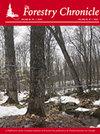软木木材之争:有可能解决吗?
IF 1.2
4区 农林科学
Q3 FORESTRY
引用次数: 0
摘要
加拿大对美国的软木出口长期以来一直是冲突的根源。随着上一份软木木材协议的到期,我们将这一问题作为森林政策的大学级项目进行了研究。本文介绍了我们对这场冲突的历史和各行动者的立场的分析,以及我们解决这场冲突二十年计划。我们的战略分为三个阶段,与我们对未来事件的期望相对应:五年的冲突和谈判,我们应该利用这些冲突和谈判来准备我们森林部门的某些变革;根据一项新协议,我们可以在十年内实施这些变革;接下来是另一场我们希望加拿大获胜的冲突,导致木材成为另一种贸易商品。我们的政策有四个关键要素:逐步过渡到市场价格体系,占公共森林木材量的55%;扩大增值转型和产品多样化;软木产量的减少;以及,对…的协调作用。。。本文章由计算机程序翻译,如有差异,请以英文原文为准。
The softwood lumber dispute: Is a solution possible?
Canadian exports of softwood lumber to the USA have long been a source of conflict. As the last Softwood Lumber Agreement expired, we examined this issue as a University class project in forest policy. This text presents our analysis of the history of this conflict and the positions of various actors, along with our twenty-year plan for resolving this conflict. Our strategy is in three phases, corresponding to our expectations of future events: five years of conflict and negotiation that we should use to prepare certain changes in our forest sector; ten years under a new agreement during which we can implement these changes; followed by another conflict that we hope Canada will win, resulting in lumber becoming just another traded commodity. Our policy has four key elements: a gradual transition to market-price systems for 55% of public forest lumber volume; an expansion of value-added transformation and diversification of products; a reduction of softwood lumber production; and, a coordination role for t...
求助全文
通过发布文献求助,成功后即可免费获取论文全文。
去求助
来源期刊

Forestry Chronicle
农林科学-林学
CiteScore
1.20
自引率
0.00%
发文量
6
审稿时长
18-36 weeks
期刊介绍:
The Canadian Institute of Forestry has published The Forestry Chronicle, a professional and scientific forestry journal, since 1925. The Forestry Chronicle is published to provide information to forest practitioners about professional and scientific management of forests and their resources. The Forestry Chronicle provides forest practitioners in Canada and around the world with a means to communicate with their peers in the professional community.
 求助内容:
求助内容: 应助结果提醒方式:
应助结果提醒方式:


